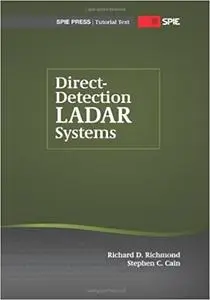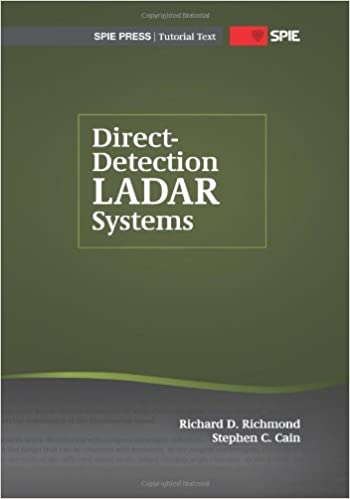Richard D. Richmond, Stephen C. Cain, "Direct-Detection LADAR Systems"
English | 2010 | ISBN: 081948072X | 156 pages | PDF | 10.4 MB
English | 2010 | ISBN: 081948072X | 156 pages | PDF | 10.4 MB
This text is designed to introduce engineers-in-training to the basic concepts and operation of 3D imaging LADAR systems. The book covers laser range equations; sources of noise in LADAR signals; LADAR waveforms; the effects of wavefront propagation on LADAR beams through optical systems and atmospheric turbulence; algorithms for detecting, ranging, and tracking targets; and comprehensive system simulation.
Computer code for accomplishing the many examples appearing throughout the text is provided. Exercises appear at the end of each chapter, allowing students to apply concepts studied throughout the text to fundamental problems encountered by LADAR engineers. Also included is a CD-ROM with the MATLAB code from the examples. Table of Contents
Preface
Mathematical Notation
Introduction to LADAR Systems
- Background
- LADAR and RADAR Fundamentals
- Heterodyne versus direct detection
- LADAR Range Equation
- Laser transmitter models
- Atmospheric transmission
- Target reflectivity and angular dispersion
- Dispersion upon reflection
- LADAR receiver throughput and efficiency
- Types of LADAR Systems and Applications
- Three-dimensional imaging LADAR systems
- Sources of Noise in LADAR Systems
- Photon counting noise
- Laser speckle noise
- Thermal noise
- Background noise
- LADAR Systems and Models
- Computational model for the range equation and signal-to-noise ratio (SNR)
- Avalanche photodiode
LADAR Waveform Models
- Fourier Transform
- Properties of the DFT
- Periodicity of the DFT
- Time-shift property of the DFT
- Convolution property of the DFT
- Transforms of some useful functions
- Transform of a Gaussian function
- DFT of a rectangular shape
- Laser Pulse Waveform Models - Gaussian pulse model
- Negative parabolic pulse model
- Hybrid pulse models
- Digital waveform models
- Pulse/Target Surface Interaction Models
- LADAR System Clock Frequency and Ranging Error
- Waveform Noise Models
- Waveform noise sources introduced at the single-sample level
- Sampling criteria and the effect of aliasing on waveforms
- Problems
Wave Propagation Models
- Rayleigh-Sommerfeld Propagation
- Free-Space Propagation
- Atmospheric Turbulence Phase Screen Simulation
- LADAR System Point Spread Function
Detection and Estimation Theory Applied to LADAR Signal
Detection
- Simple Binary Hypothesis Testing
- Decision Criteria
- Detection Methods Using Waveform Data
- Receiver Operating Characteristics
- Range Estimation
- Peak estimator
- Cross-correlation range estimator
- Leading-edge detectors
- Range Resolution and Range Accuracy
- Problems
LADAR Imaging Systems
- Single-Pixel Scanning Imagers
- Gated Viewing Imagers
- Design and modeling considerations
- Staring or FLASH Imagers
- Modeling 2D and 3D FLASH LADAR Systems
- Speckle Mitigation for Imaging LADAR Systems



